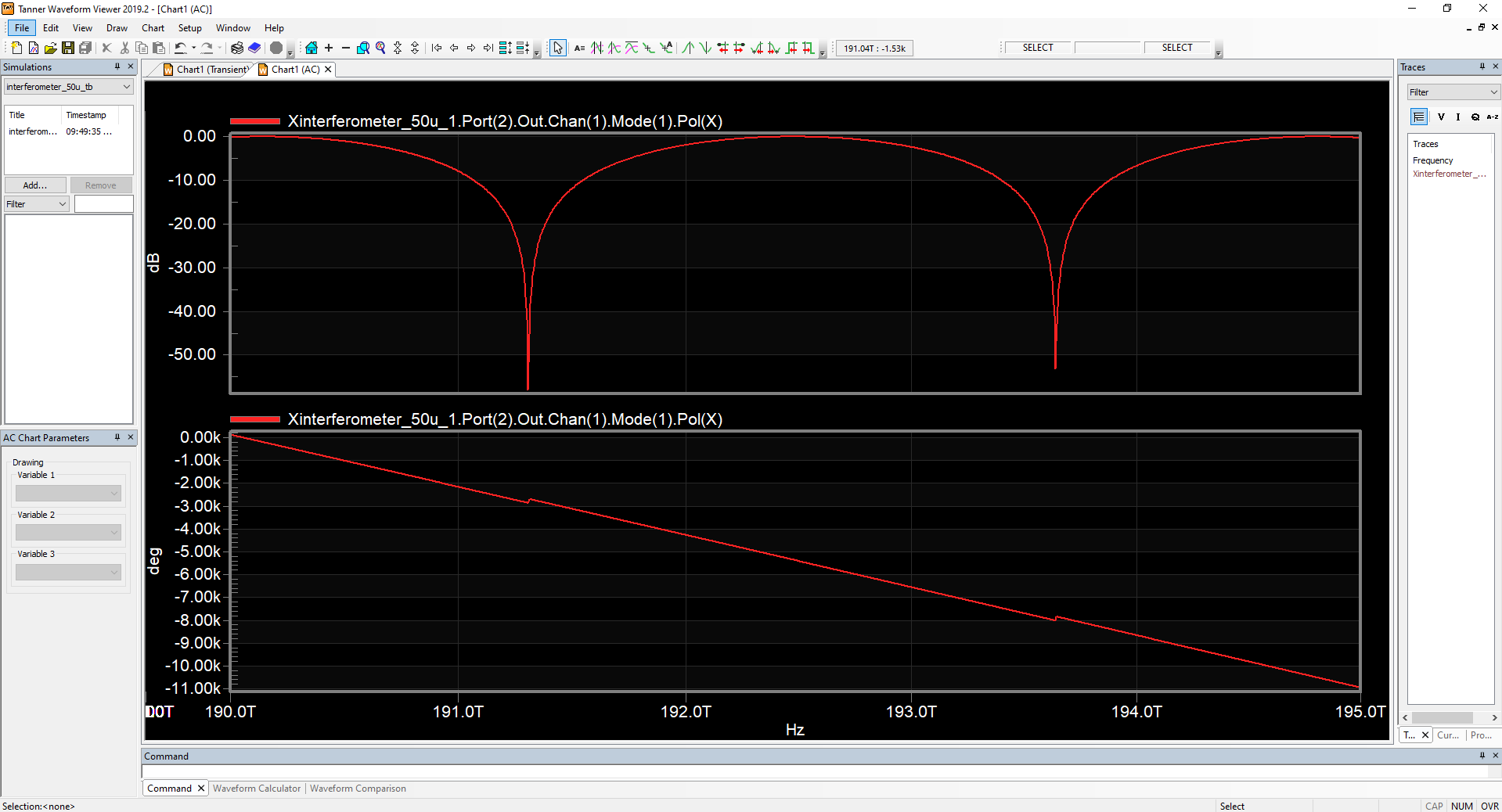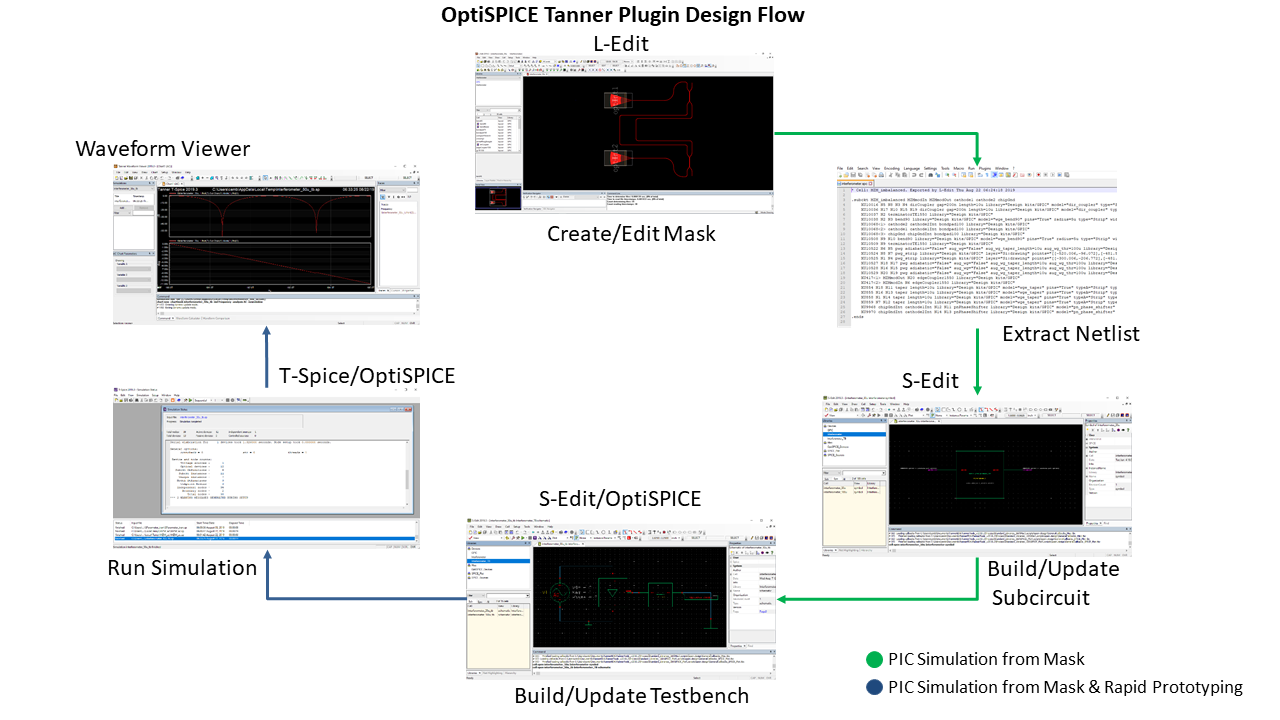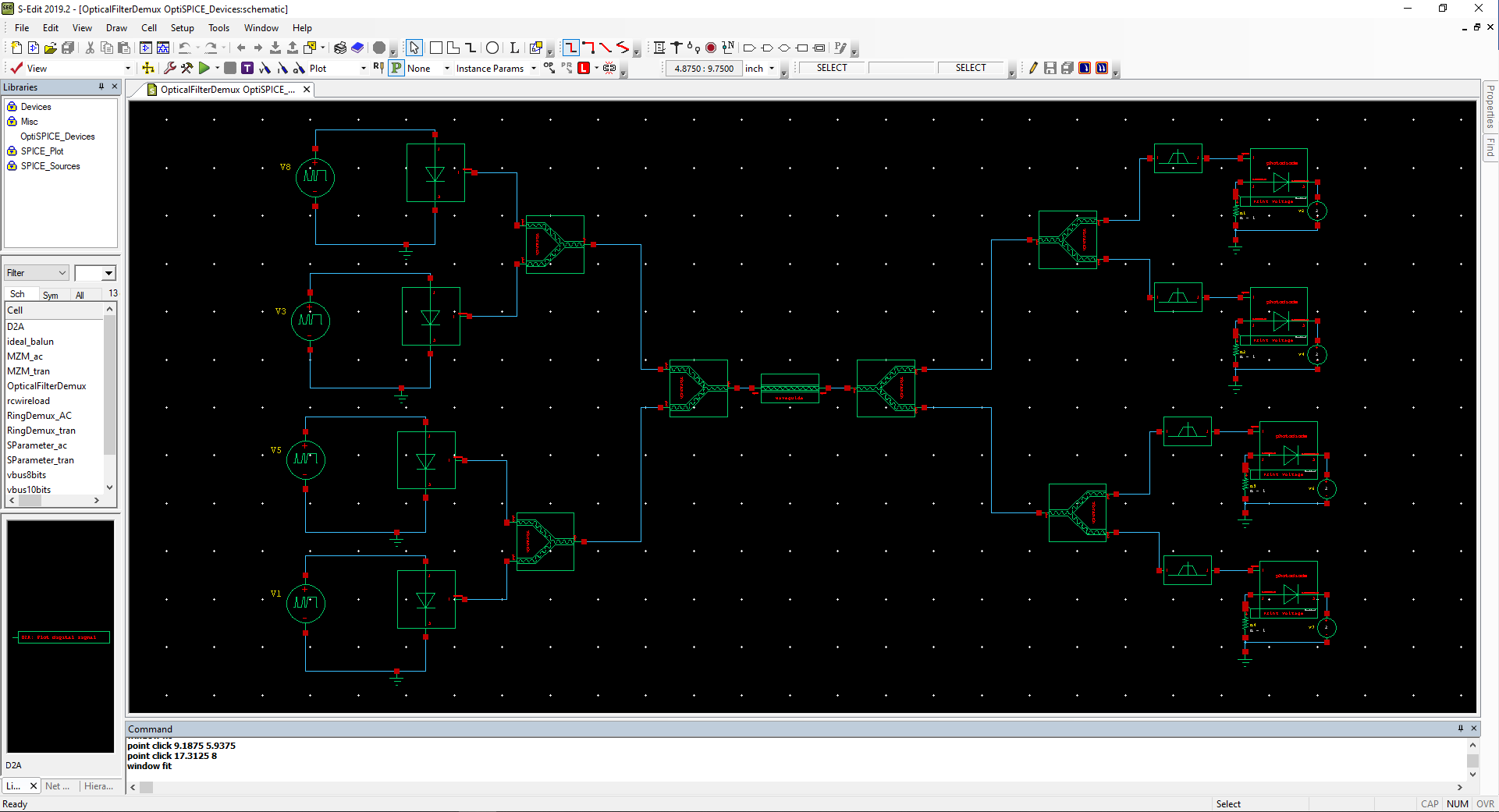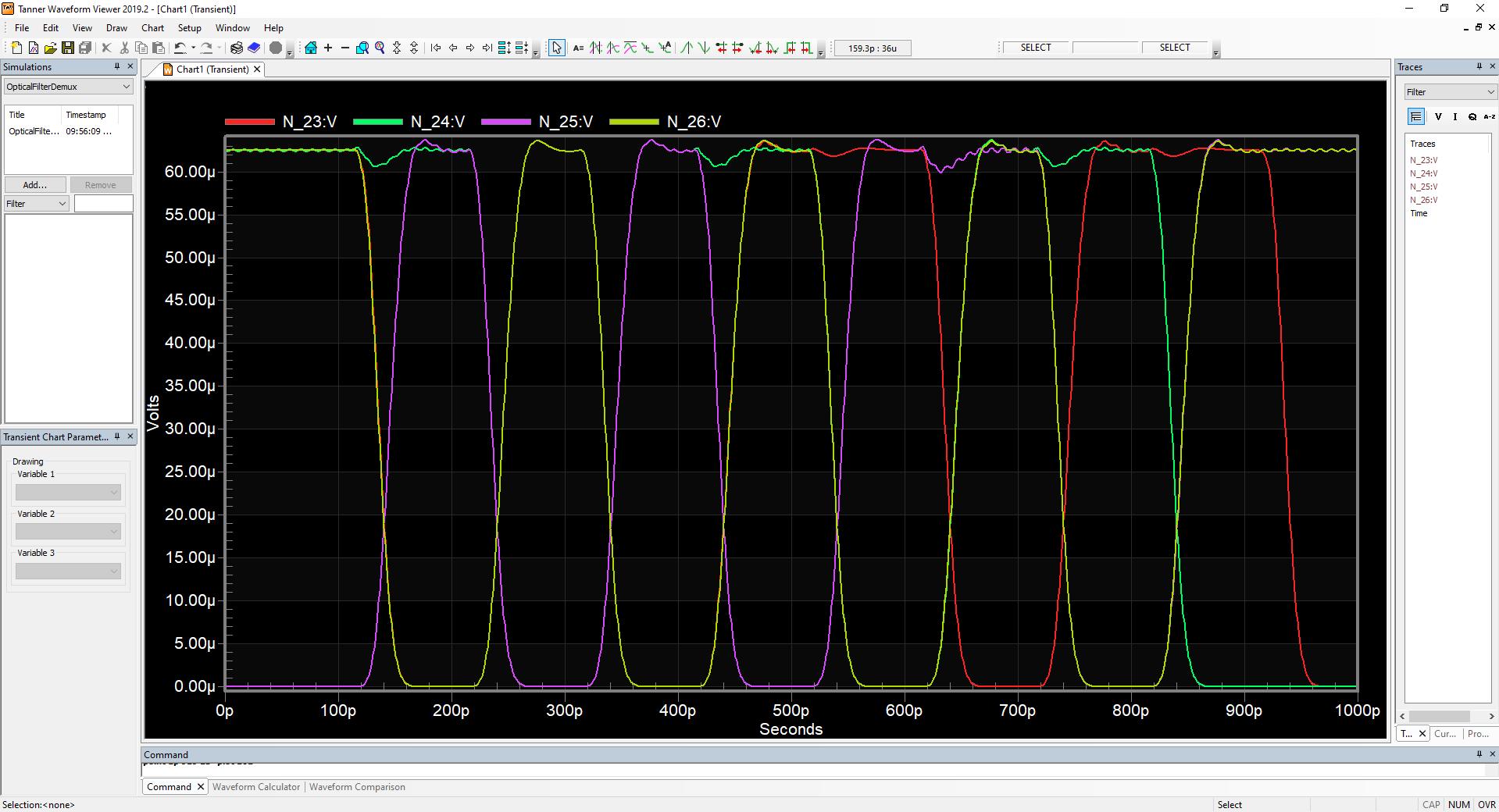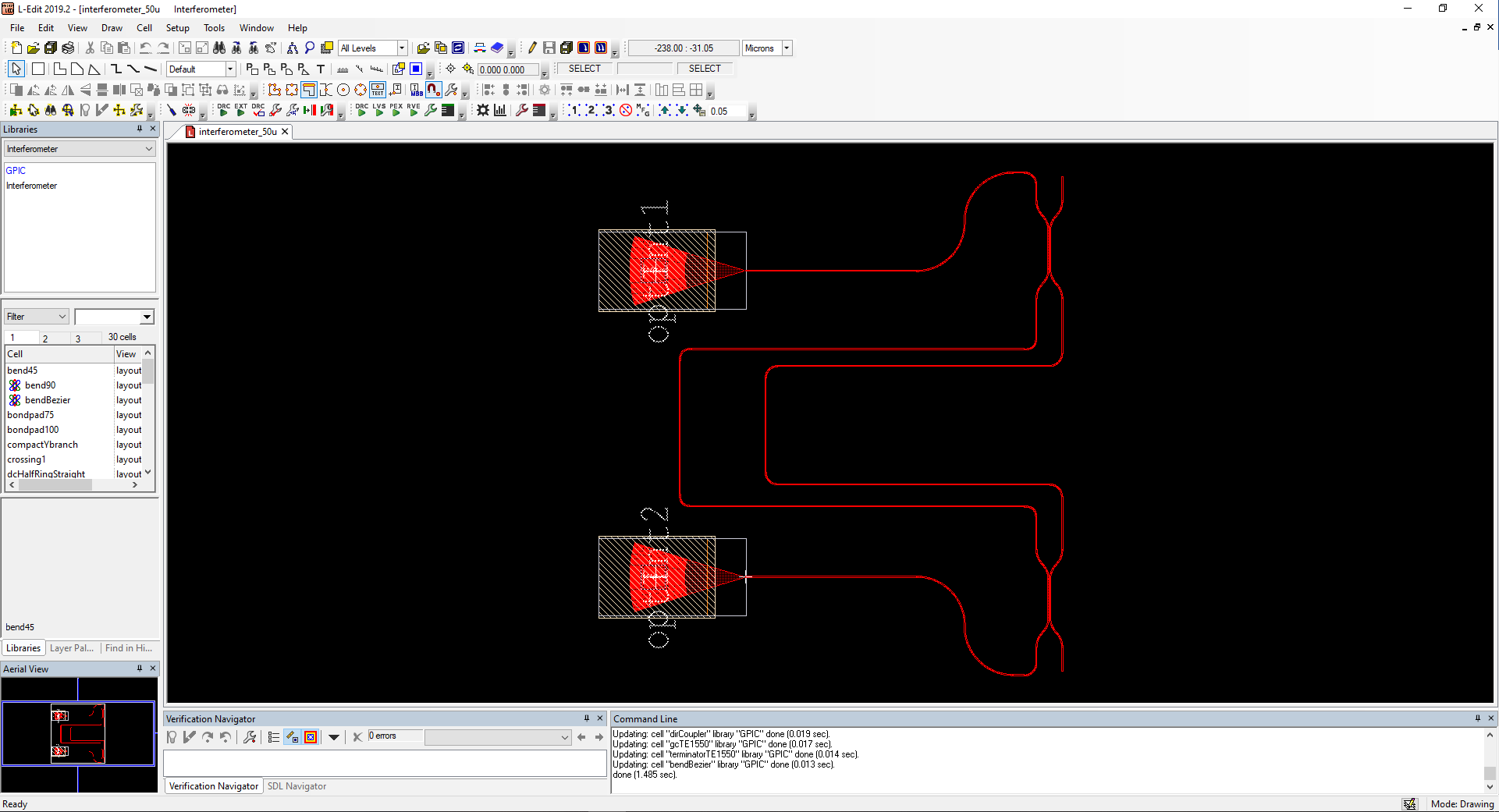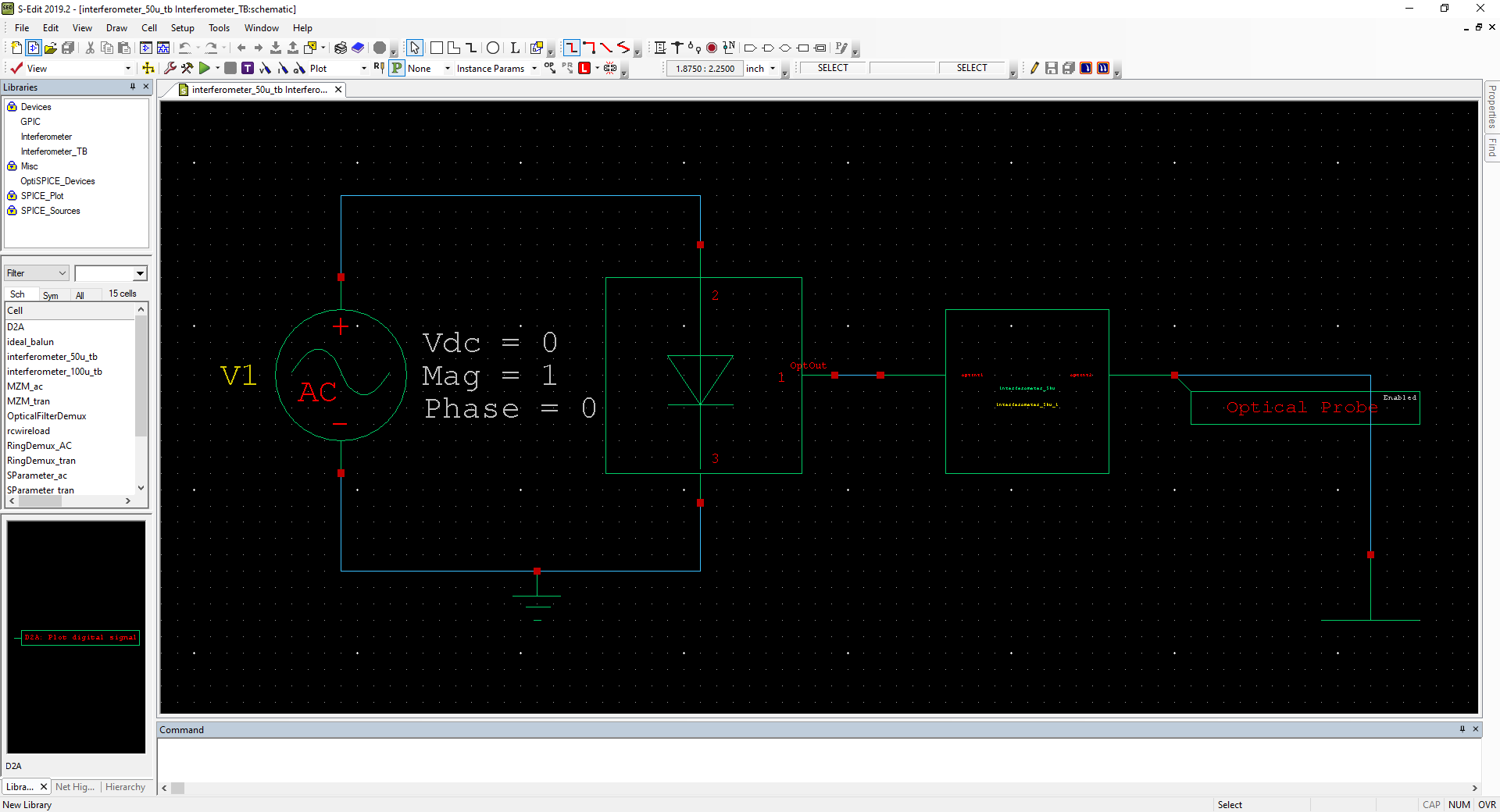Introduction
OptiSPICE Tanner (Siemens EDA) Plugin was created by Optiwave and Siemens (Mentor Graphics) to enhance (Siemens EDA) Tanner T-Spice with optical circuit simulation capabilities. The seamless integration of optical models into the Siemens EDA (Tanner EDA) enables the simulation of complex optoelectronic circuits from schematic or mask layout within a single design environment.
Supported Features
- Multi-channel bidirectional optical time and frequency domain simulation with SPICE
- Optoelectronic feedback and control loop simulation
- Noise, channel cross-talk, and interference effects
- Support for Tanner GPIC PDK
- Direct optoelectronic interfacing with SPICE components via laser/photodiode/modulators etc.
- Optical S-Parameter device for passive components. Compatible with OptiFDTD and OptiBPM
- User-defined or experimental data input for compact model creation, i.e., waveguide effective index and responsivity.
- Standard bandpass, bandstop optical filter components (Butterworth, Chebyshev, Bessel) for quick prototyping
- Optical signal visualization (magnitude, phase, real, imaginary, power, etc..) with Tanner Waveform Viewer
Updates
Enhanced following devices with additional features,
- Laser/LaserFC – Users can now define the channel values either in wavelength or frequency
- S-Parameter – The S-Parameter input file support was extended to include the files generated by OptiGrating.
- S-Parameter and Waveguides – Time delay interpolation capabilities were enhanced. The interpolation of optical signals can be done using either polar (better accuracy) or cartesian coordinates (better stability).
- Waveguide – The capability to define the waveguide length as a function of voltage was added. The length affects the time delay and the phase shift between the input and the output ports of the waveguide. In addition, OptiMode can be driven by OptiSPICE Tanner Plugin to determine the modal effective index at a set frequency numerically. The results from OptiMode is directly integrated into the waveguide simulation to determine the time delay and the phase shift of an optical signal.
Two new optical devices, an ideal circulator and the ideal isolator were added to the S-Edit library and OptiSPICE models.
The ability to use Verilog and optical models in the same circuit was added.
A new optoelectronic gyroscope example to the S-Edit library was added. A tutorial for this example is included under the documentation folder.
Licensing driver installer added to the Siemens EDA (Tanner) OptiSPICE Plugin package.
Design Flow
Capabilities
OptiSPICE optical models use slowly varying envelope approximation to model the behavior of optical signals as they travel through various devices. Complex valued bidirectional optical signals are separated into individual channels with unique optical carrier frequencies. It is possible to use OptiSPICE optical models combined with T-Spice electrical devices to perform rapid prototyping and design verification.
Rapid Prototyping
The standard device library included in OptiSPICE Tanner Plugin allows users to design optical circuits using basic building blocks with generalized simulation models independent of any PDKs. It enables fast prototyping of optoelectronic circuits.
Design Verification
The main advantage of having optical models built into the Siemens EDA (Tanner EDA) is the ability to verify optical mask designs before fabrication. Users can extract a netlist from their mask design via L-Edit, build a test bench with optical and electrical devices in S-Edit, and run simulations using the OptiSPICE Tanner plugin. This workflow allows the user to create and test either a single device mask like an MZI or a fully featured optical chip like a coherent transceiver.
